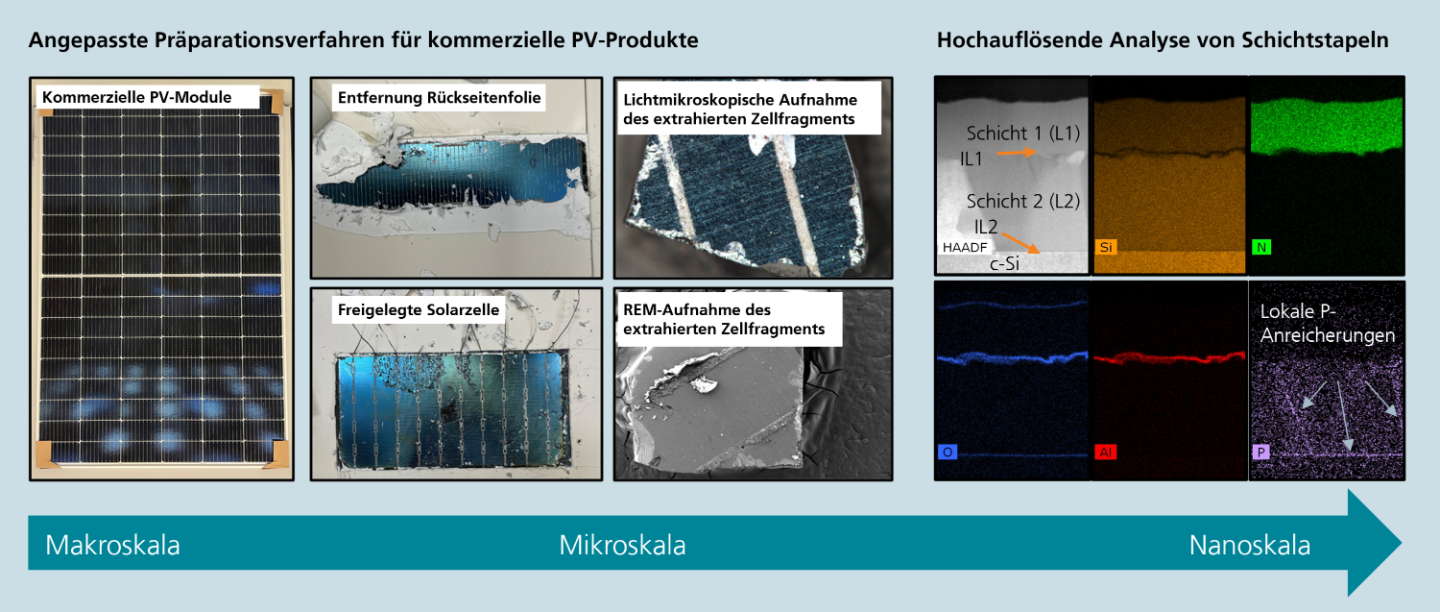Preparative and analytical methods for evidence of patent infringements
In the highly competitive photovoltaic industry, technical innovations can bring decisive advantages, especially for European market participants. The prerequisites for this are functioning competition and the ability to enforce the protection of intellectual property. This is where the new "IP Protection" project comes in, in which the Fraunhofer Center for Silicon Photovoltaics CSP in Halle (Saale) is researching preparative and analytical methods together with partners in order to be able to provide legally secure evidence of patent infringements.


Technological advancements and functioning competition on international markets are crucial for the continuous expansion of photovoltaics and the sustainable development of production capacities for solar cells. Unique technological features only increase competitiveness in the long term if they are accompanied by effective patent protection, as inventions in solar cells can be copied and infringements of property rights are difficult to detect. Manufacturers are increasingly taking into account the legal and technological protection of intellectual property (IP) for existing and future solar cell technologies such as PERC, HJT, TOPCon, back-contact cells or perovskite tandems.
"Practically relevant and legally robust material analysis methods for assessing infringements of property rights are of great interest to the photovoltaic industry. They are a prerequisite for the industrial exploitation of research results and affect solar modules already available on international markets today as well as the protection of future patents in advance development," says Dr. Marko Turek, acting group leader "Diagnostics and Metrology Solar Cells" at Fraunhofer CSP.
The project "IP Protection - High-resolution material and thin-film analytics for "next generation" solar cell technologies to protect intellectual property for German and European market participants", which is funded by the Federal Ministry for Economic Affairs and Climate Protection BMWK and runs until March 2027, aims to develop new preparative methods and analytical techniques for high-resolution material and thin-film characterization with a focus on interfaces. The focus is on innovative methods for large-area preparation and high-resolution characterization of encapsulated layers, for the localization of microscopic current paths and for the evaluation of local passivation properties. These methods are to be correlated with simplified and fast measurement procedures and made suitable for routine use.
The Fraunhofer CSP is contributing its extensive expertise and excellent equipment in the field of material and thin-film analysis to the project. "For the development of novel preparation methods, with which low-damage, analytical access to buried interfaces in solar cells is to be created, we use etching and polishing methods that can be applied over large areas, such as oblique grinding based on plasma polishing and ultrashort pulse laser ablation techniques," says Dr. Stefan Lange, the project manager of "IP Protection" and acting team leader of "Solar Cell Diagnostics" at Fraunhofer CSP. Combined depth profiling measurement methods (TEM, ToF-SIMS, XPS) can be used to examine organic and inorganic layers and interfaces with the required detection limit and depth resolution down to the atomic range with maximum sensitivity. The team uses scanning probe techniques, electron beam-based methods and nano-probing to detect process- and material-related microscopic current paths as well as their spatial distribution, size class and specific functional characteristics.
"We can provide the best possible support to companies that want to protect their innovative products through our investigation, so that a clear and legally valid assessment of material and interface properties together with cause-and-effect principles will be possible in future solar cell multilayer systems," adds Lange.